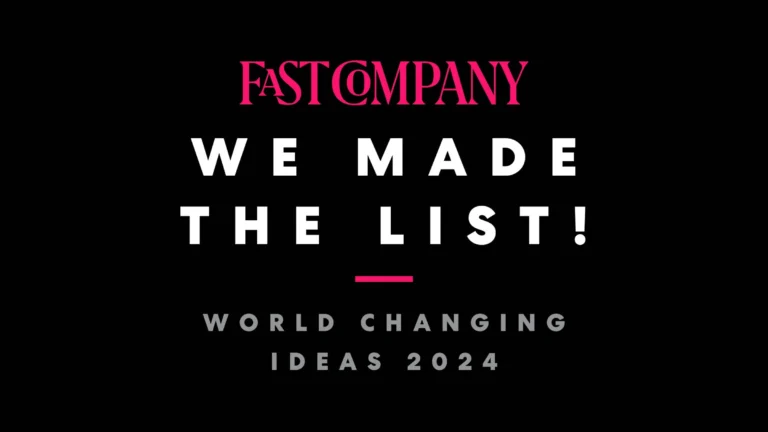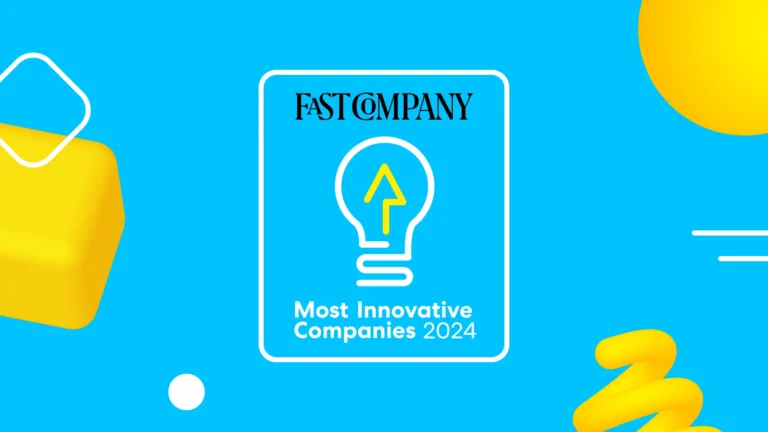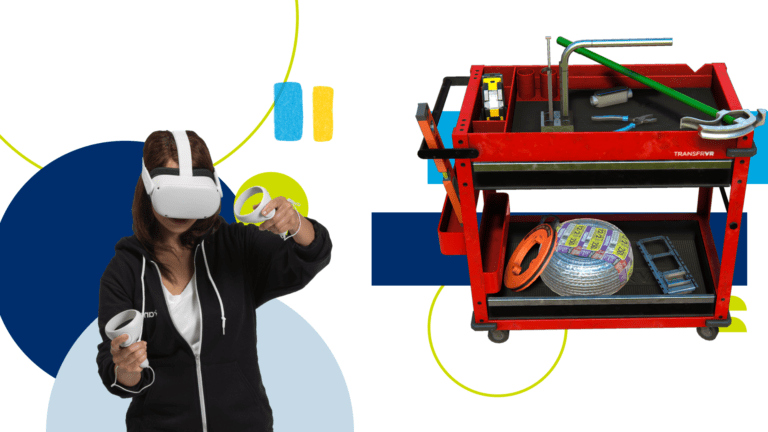Manufacturing in the US is in the midst of a powerful resurgence, creating thousands of open jobs in an industry many not have previously thought of. It might also be the best-kept secret in the American workforce, since there are still critical worker shortages in the manufacturing sector.
Job seekers of all ages seem unaware of numerous openings in this high-demand field that can lead to a well-paying career. In other cases, job seekers might be aware there are manufacturing jobs available, but lack understanding of what a full career path looks like.
Sarah Hartwick, Vice President of Education and Workforce Policy with the Illinois Manufacturer’s Association, sat down with us on a manufacturing-focused episode of Upward, the Transfr podcast, to talk about how Illinois manufacturers are making inroads with undiscovered talent. In conversation with Mitch Dickey, a Transfr state workforce manager specializing in Illinois and Kentucky, the two explored novel methods for spreading the word about modern manufacturing and helping students and other job seekers decide if a manufacturing career is the right fit for them.
Overcoming outdated notions about manufacturing via technology
“One of the biggest missions of the Illinois Manufacturers Association is [changing people’s] impression that manufacturing is dark, dirty, and dangerous,” Sarah says. “It is clean. It is high tech. It is sustainable. It is diverse. It is on-shoring in ways that it has not been doing for decades because of the supply chain crisis we saw during COVID. It is a very strong career, and more modernized than it was before.”
This shift in attitudes around manufacturing jobs came about as a result of a two-pronged dilemma: The public perceived that “good jobs” in the US manufacturing sector were drying up due to a host of economic shifts (including offshoring), which led many schools and students to turn away from highlighting or exploring paths to manufacturing careers; the pipeline for new trainees and workers eventually dried up. Following this dramatic decline, and even now during a strong upsurge, vital skilled jobs in the sector go unfilled.
The state of Illinois is an excellent example for both the problem and applied solutions. There is a very strong manufacturing sector across Illinois:
“Our economic output is over $54 billion annually,” Sarah explains. “An average [manufacturing employee] salary in Illinois is over $79,000 a year, we have over 660,000 employees.” Yet in the same breath she mentions, “there are still 800,000 job openings within the manufacturing sector across the country.”
Providing pathways to manufacturing careers
Solving this crisis of missing workers requires an across-the-board effort: For starters, CTE (Career and Technical Education) may be lacking in schools. Sarah cited that the IMA had successfully backed a bill requiring Illinois high schools to include rigorous CTE programming in their curricula.
Another challenge to filling these roles is that students and job seekers may not be aware of all of the opportunities in their area, the wide array of jobs that could be a good fit, or how to acquire needed training. Partnerships between educational institutions, private businesses, and state and local workforce development can help remedy these problems. A unique way that IMA has started tackling them has been to create a bus tour (partnering with Transfr for 2023!) taking students to manufacturing plants across the state — in some cases demonstrating that name brand manufacturing was going on practically in their own backyards.
While Sarah acknowledges that high schools and community colleges are key in reaching out to the workers of tomorrow, a remaining (and significant) hurdle is changing the minds of older generations, be they the parents of high school students, or people already in the workforce but making a career change.
“So many people don’t know what a manufacturing job looks like today,” Sarah says. “They don’t know that it’s so high tech.”
And new high tech jobs require tech-savvy training methods, another benefit to today’s worker.
Using tomorrow’s technology to train tomorrow’s manufacturing workforce
Noting that exposure and pathways are key, Transfr’s Mitch Dickey opines, “If you can’t see it, you can’t be it.”
That is to say: Expanding career exploration and career pathing is essential for job seekers to make informed decisions.
Mitch suggested taking on the problem as “both a workforce issue and an equity issue. How can we expand this workforce to be accessible to folks in every single background [including those who] have been underserved for a long time?”
Many potential manufacturing workers also lack essential exposure to the career possibilities — if no one in your family or immediate community had a great manufacturing job, understandably you might look elsewhere. As Mitch puts it, “If you don’t know what this career looks like [or] anything about the career, how are you supposed to know if it’s something that fits you?”
Career exploration in the form of VR and AR are particularly helpful in that they can provide a wider degree of job exposure and even cover some manufacturing training fundamentals while mitigating some of the expense involved in outfitting a CTE lab with equipment replicating modern manufacturing processes — and keeping it up to date. Rather, virtual reality interactions can provide a much more compelling taste of what the day-to-day would be like on a particular job.
Closing the gap in the manufacturing industry will require a coordinated effort in career exploration and training where manufacturers, schools, workforce development boards, and other businesses and organizations serving students and job seekers work together to build awareness of these career paths. Sarah felt optimistic that the manufacturing industry was gaining momentum and gearing up to tackle the needs and concerns of the 21st Century:
“We’re at a really cool time where people should be seeing what manufacturing floors look like today. They don’t know that it’s so high-tech, they don’t know what it pays. Newer generations want to be passionate about their career. They want to feel that they have an impact.”





